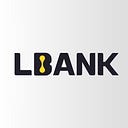What are Coin-M Futures?

The crypto futures market, with its monthly trading volume in the trillions of dollars, has provided traders with increased efficiency and LBank Futures has emerged as a major player in this market. The market features two main types of futures contracts: COIN-Margined and USDT-Margined contracts. COIN-Margined contracts enable users to hold the actual crypto asset, like bitcoin, while USDT-Margined contracts involve holding the stablecoin asset, such as USDT. This article will concentrate on COIN-Margined contracts, exploring their unique characteristics, benefits, and distinguishing features from USDT-M Futures.
Understanding Coin Margin Futures
Coin-M Futures is a type of crypto futures that are settled and collateralized in their based cryptocurrency. Unlike USDT Margin Futures, traders can continue to use their crypto assets such as bitcoin and ethereum as collateral instead of stablecoins. For example, you can use Ethereum (ETH) as collateral for pairs like ETH/USD and BTC/USD.
With Coin-M Futures, you can go long (predicting a price increase) or short (predicting a price decrease), just like in regular futures. The unique thing is that everything is settled in crypto. Traders can use different cryptocurrencies as collateral for different pairs.
Coin-M Futures vs. USDT Margin Futures
In USDT Margin Futures, profits and losses are settled in Tether (USDT), while in Coin-M Futures, they are settled in Bitcoin. This means that when you trade Coin-M Futures, your gains and losses are measured in Bitcoin.
Notably, Coin-M Futures introduce an expiration date, scheduled for the last Friday of each quarter. This contrasts with perpetual swaps, which lack a fixed end date. The introduction of an expiration date adds a layer of complexity to Coin-M Futures trading, requiring traders to be vigilant about the timing of their positions’ conclusion.
Other outlined differences between USDT-M Futures and Coin-M Futures:
Type of Currency
USDT Margin Futures: Only supports trading with USDT Tether.
Coin Margin Futures: Allows users to choose from various cryptocurrencies, such as BNB, BTC, or other supported coins, in addition to USDT.
Type of Contract
USDT Margin Futures: Contracts are perpetual, meaning they can remain open indefinitely as long as the position is not in a loss and the trader has sufficient assets. Funding fees are applicable, payable every eight hours.
Coin Margin Futures: Offers a choice between perpetual contracts and quarterly contracts with a specific delivery date. Quarterly contracts automatically close positions at the end of the specified delivery date, regardless of profit or loss.
Trading Fees
Both USDT Margin Futures and Coin Margin Futures have different trading fees based on the user’s VIP level.
VIP levels range from 0 to 7, and trading fees vary accordingly. For example, comparing VIP 0 maker and taker fees with VIP 7 fees, there is a 0.070% reduction in maker fees for USDT Margin Futures. Users can receive a 10% fee reduction when trading with BNB in USDT Margin Futures as a maker.
The choice between USDT Margin Futures and Coin Margin Futures depends on individual preferences, risk tolerance, and the desired type of contract (perpetual or quarterly). Traders should also consider the supported currencies and the associated trading fees based on their VIP level.
Benefits of Coin Margin Futures
1. Preference for Volatile Assets: Some traders prefer using volatile assets like Bitcoin as collateral, aligning with their belief in the asset’s long-term potential. This approach allows them to avoid holding stablecoins, even during trades.
2. Bitcoin Maximalism: Bitcoin maximalists, who favor Bitcoin over other cryptocurrencies, find coin margin futures appealing. By using Bitcoin as collateral, they can benefit from price movements while avoiding exposure to stablecoins.
3. Compounding Gains: When taking a long position using coin margin futures, the gains are compounded. As the percentage points on the contract are based on the US dollar pair, a move in favor results in both the underlying asset (Bitcoin) and additional satoshis gaining value.
Limitations of Coin Margin Futures
Depreciating Collateral in Short Positions: The downside of coin margin futures becomes apparent when taking short positions. In this scenario, traders receive payouts in an asset (Bitcoin) that is depreciating in value. This can diminish the profitability of short trades.
Trading Coin Margin Futures on a Crypto Exchange
1. Transferring Collateral
- Navigate to the wallet section on the Exchange.
- Select the transfer button and choose the spot account.
- Transfer the desired amount of Bitcoin to the coin-margined futures account.
2. Accessing Coin Margin Futures
- Go to the trade section and select coin margin futures for Bitcoin.
- Choose the desired leverage, such as 20x.
- Decide on a long or short position based on market analysis.
3. Executing the Trade
- Initiate trade by selecting the market price for instant execution.
- Confirm the trade details and execute the order.
Wrapping Up
Trading Coin Margin Futures offers a unique approach for users who prefer using volatile assets like Bitcoin and Ethereum as collateral. While Coin Margin Futures are not currently offered on LBank Exchange, users can leverage put USDT Margin Futures to take advantage of the market regardless of its movements. However, as with any form of trading, it is essential for traders to do their own research, stay informed about market conditions, and trade responsibly.
Disclaimer: The opinions expressed in this blog are solely those of the writer and not of this platform.
